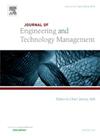Building technologies to market: Can network structure and resources explain innovation in agribusiness?
IF 3.9
3区 管理学
Q2 BUSINESS
Journal of Engineering and Technology Management
Pub Date : 2025-04-01
DOI:10.1016/j.jengtecman.2025.101878
引用次数: 0
Abstract
An innovation network can be understood as a heterogeneous interorganisational model, in which stakeholders interact through a series of collective actions based on innovation. From this perspective, and following a review of the literature, this paper aims to determine the factors related to international interorganisational knowledge networks that contribute to the achievement of innovation. To test our theoretical arguments, the empirical work has focused on organisations in the agribusiness sector in Brazil and Spain. In terms of the methodological aspects, the research is qualitative in nature and has used crisp-set qualitative comparative analysis (csQCA). The main conclusions we have drawn are the following: a) in the context of interorganisational knowledge networks, the ‘strength of the ties’ variable is decisive and sufficient to influence innovation; b) the ‘density’, ‘size’ and ‘configuration’ variables (agglomeration, power, contractual formalisation and directionality) of the networks are not sufficient on their own to explain innovative performance; and c) despite the vast body of literature pointing to territorial agglomeration (clustered networks) as a source of resources for networks, dispersed networks combined with other configurations with a different structure can generate innovations in knowledge networks.
构建面向市场的技术:网络结构和资源能否解释农业综合企业的创新?
创新网络可以被理解为一个异质的组织间模型,在这个模型中,利益相关者通过一系列基于创新的集体行动进行互动。从这个角度出发,在回顾文献之后,本文旨在确定与国际组织间知识网络相关的因素,这些因素有助于实现创新。为了检验我们的理论论点,实证工作集中在巴西和西班牙农业综合企业部门的组织上。在方法方面,研究本质上是定性的,并使用了crisp-set定性比较分析(csQCA)。我们得出的主要结论如下:a)在组织间知识网络的背景下,“联系强度”变量是决定性的,足以影响创新;B)网络的“密度”、“大小”和“配置”变量(集聚、权力、契约形式化和方向性)本身不足以解释创新绩效;c)尽管大量文献指出地域集聚(集群网络)是网络的资源来源,但分散的网络与其他结构不同的配置相结合,可以产生知识网络的创新。
本文章由计算机程序翻译,如有差异,请以英文原文为准。
求助全文
约1分钟内获得全文
求助全文
来源期刊
CiteScore
8.00
自引率
6.20%
发文量
29
审稿时长
>12 weeks
期刊介绍:
The Journal of Engineering and Technology Management (JET-M) is an international scholarly refereed research journal which aims to promote the theory and practice of technology, innovation, and engineering management.
The journal links engineering, science, and management disciplines. It addresses the issues involved in the planning, development, and implementation of technological capabilities to shape and accomplish the strategic and operational objectives of an organization. It covers not only R&D management, but also the entire spectrum of managerial concerns in technology-based organizations. This includes issues relating to new product development, human resource management, innovation process management, project management, technological fusion, marketing, technological forecasting and strategic planning.
The journal provides an interface between technology and other corporate functions, such as R&D, marketing, manufacturing and administration. Its ultimate goal is to make a profound contribution to theory development, research and practice by serving as a leading forum for the publication of scholarly research on all aspects of technology, innovation, and engineering management.

 求助内容:
求助内容: 应助结果提醒方式:
应助结果提醒方式:


